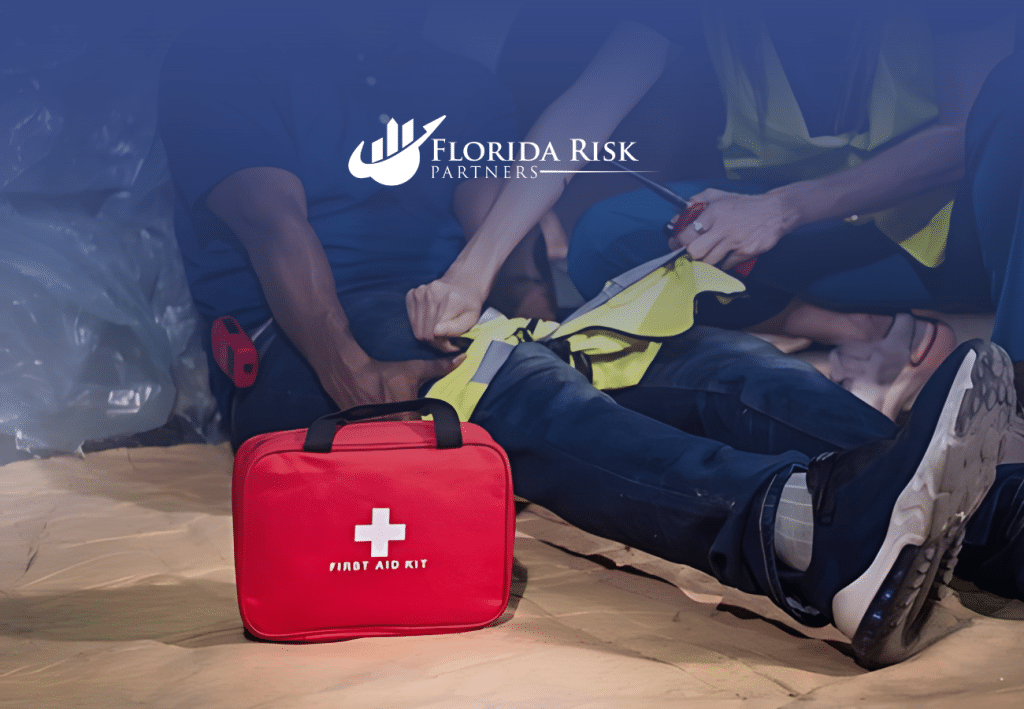-
Main Office: 1434 E. Bloomingdale Ave Valrico, FL 33596-6110
-
Phone: (888) 601-6660
-
Email: info@floridariskpartners.com

In today’s fast-paced and ever-changing work environments, companies are constantly searching for ways to manage and reduce their workers’ compensation costs. One of the most effective strategies is the implementation of a Pre-Injury Management Plan (PIM). This proactive approach not only helps in preventing workplace injuries but also enhances overall workplace safety, reduces operational disruptions, and ultimately lowers workers’ compensation costs.
As a commercial insurance and risk management firm specializing in workers’ compensation, we differentiate ourselves at the point of sale by not only diagnosing issues but also offering comprehensive solutions. A key solution I recommend to companies struggling to control their workers’ compensation costs is the development and implementation of a Pre-Injury Management Program.
This blog post will delve into what a Pre-Injury Management Plan entails, its essential components, and the steps necessary to implement it successfully at the client or prospect level.
What is a Pre-Injury Management Plan?
A Pre-Injury Management Plan is a strategic framework focused on preventing workplace injuries before they occur. Unlike reactive safety measures that only address issues after an injury, a PIM is a proactive approach designed to identify, assess, and mitigate potential hazards in the workplace. This plan integrates various aspects of safety, training, employee engagement, and risk management to create a cohesive strategy aimed at reducing the likelihood of injuries.
The scope of a Pre-Injury Management Plan goes beyond mere compliance with safety regulations. It involves fostering a culture of safety, where every member of the organization understands their role in maintaining a safe work environment. This holistic approach not only protects employees but also preserves organizational resources and enhances productivity.
Components of a Successful Pre-Injury Management Plan
A well-structured Pre-Injury Management Plan is built on several key components. Each of these elements plays a crucial role in ensuring the plan’s effectiveness and sustainability.
1. Risk Assessment and Hazard Identification
The foundation of any PIM plan is a thorough risk assessment process. This involves identifying potential hazards within the workplace, evaluating the severity and likelihood of these risks, and prioritizing them for mitigation. Regular audits, safety inspections, and employee feedback are vital in keeping the risk assessment process dynamic and up-to-date.
2. Development of Safety Policies and Procedures
Once risks are identified, the next step is to develop clear and comprehensive safety policies and procedures. These policies should outline safe work practices, emergency response protocols, and procedures for reporting incidents or near misses. It’s crucial that these guidelines are accessible, easily understood, and regularly updated to reflect new insights or changes in the work environment.

3. Employee Training and Engagement
Training is an integral part of any Pre-Injury Management Plan. Employees should be trained not only in safety practices specific to their roles but also in the importance of maintaining a safety-first mindset. Regular training sessions, safety drills, and ongoing education help reinforce these practices and ensure that safety remains a top priority. Additionally, engaging employees in safety discussions and decision-making processes fosters a sense of ownership and responsibility.
4. Leadership Commitment and Safety Culture
The success of a PIM plan largely depends on the commitment of leadership. Leaders must not only endorse the plan but also actively participate in safety initiatives. This visible commitment from the top down helps to establish and maintain a safety culture where safety is ingrained in every aspect of the organization’s operations.
5. Incident Reporting and Response Protocols
Even with the best preventive measures, incidents may still occur. Therefore, having robust incident reporting and response protocols in place is essential. These protocols should include clear procedures for reporting incidents, investigating root causes, and implementing corrective actions to prevent recurrence.
6. Integration with Medical Facilities
Another critical component of a PIM plan is the integration with medical facilities. Establishing partnerships with healthcare providers ensures that employees receive prompt and appropriate medical care in the event of an injury. This collaboration also supports effective return-to-work programs, where medical partners play a key role in assessing an employee’s readiness to resume duties and recommending any necessary accommodations.
7. Continuous Monitoring and Improvement
A Pre-Injury Management Plan is not a static document; it requires continuous monitoring and improvement. Regular safety audits, data analysis, and feedback loops are essential to identify new risks, assess the effectiveness of existing measures, and make necessary adjustments. This continuous improvement process helps in maintaining a safe work environment that evolves with the changing needs of the organization.
Implementing a Pre-Injury Management Plan: Steps to Success
Implementing a Pre-Injury Management Plan at the client or prospect level requires a strategic approach. Here’s a step-by-step guide to ensure a successful implementation:
1. Initial Consultation and Risk Assessment
The first step is to conduct an initial consultation with the client or prospect to understand their current safety practices and workers’ compensation challenges. This should be followed by a comprehensive risk assessment to identify potential hazards and areas for improvement.
2. Customization of the PIM Plan
Based on the findings from the risk assessment, a customized PIM plan should be developed. This plan should address the specific risks identified and align with the organization’s operational needs and safety goals. It’s important to involve key stakeholders in this process to ensure that the plan is practical and achievable.
3. Training and Engagement
Once the plan is developed, the next step is to train employees and engage them in the implementation process. This includes conducting training sessions on the new safety policies, emergency procedures, and incident reporting protocols. Employees should also be encouraged to provide feedback and participate in safety committees or initiatives.

4. Leadership Involvement
Securing the commitment and involvement of leadership is crucial for the success of the PIM plan. Leaders should be actively involved in safety meetings, audits, and other safety-related activities. Their visible commitment helps reinforce the importance of the plan and motivates employees to take safety seriously.
5. Implementation of Safety Measures
With the plan in place and employees trained, the next step is to implement the safety measures outlined in the PIM plan. This may include physical modifications to the workplace, changes in operational procedures, and the introduction of new safety equipment or technologies.
6. Monitoring and Adjustments
After implementation, it’s essential to continuously monitor the effectiveness of the PIM plan. Regular safety audits, incident reports, and employee feedback should be used to assess the plan’s impact and make any necessary adjustments. This ongoing monitoring ensures that the PIM plan remains effective and relevant.
7. Periodic Review and Updates
Finally, the PIM plan should be reviewed and updated periodically. This ensures that the plan evolves with the organization’s needs, incorporates new safety insights, and remains compliant with any changes in safety regulations.
Conclusion and Call to Action
Implementing a Pre-Injury Management Plan is a proactive and effective way to control workers’ compensation costs while fostering a safer and more productive work environment. By following the steps outlined in this blog post, companies can develop a robust PIM plan that not only reduces the likelihood of injuries but also supports a culture of safety.
For those interested in learning more about Pre-Injury Management and how to implement a successful plan, I encourage you to download a copy of our comprehensive e-book using the form below. It provides in-depth insights, case studies, and practical tools to help you take your workplace safety to the next level.
Ready to get started? Request your free copy of our e-book today and begin the journey towards a safer, healthier workplace.
Call Us Or
Schedule an Appointment
Select an agent below to view our online calendars and select a day and time that works best for you or call us directly at 888-601-6660. When you use our online calendars, you will receive an email with more information.



